Contents
- 1. Old San Juan (San Juan Viejo)
- 2. El Morro Fort (Fuerte San Felipe del Morro)
- 3. Castillo de San Cristóbal
- 4. El Yunque National Forest
- 5. Culebra Island (Isla Culebra)
- 6. Vieques and Bioluminescent Bay
- 7. Catedral de San Juan Bautista
- 8. Cayo Icacos
- 9. Surfing and Whale Watching at Rincon
- 10. Luquillo Beach
- 11. Rio Camuy Caves (Parque de las Cavernas del Río Camuy)
- 12. Ponce’s Historic City Center
- 13. Isla Verde
- 14. Condado Beach
- 15. Seven Seas Beach
- 16. Museum of Art Puerto Rico
- Frequently Asked Questions
- When is the best time to visit Puerto Rico?
- What is the best way to get around Puerto Rico?
As a tropical Caribbean travel destination, Puerto Rico has it all and then some. Beautiful palm-lined beaches, some with calm warm waters lapping the golden sand and others with huge waves and famous surf breaks, draw all kinds of beach seekers, from couples and families to hard-core surfers.
Home to the US Forest System’s only tropical rainforest and the nighttime wonders of the Bioluminescent Bay, Puerto Rico is a pleasant surprise for nature lovers. Add to this the culture and charm of historic San Juan, with its colonial architecture and old forts, and the picture is complete.
Puerto Rico is a complex island with a Spanish Caribbean culture and an obvious American twist. This is particularly visible around San Juan, with its American chain restaurants and other comforts associated with mainland USA. Venturing further afield, you will find quaint towns, small villages, beautiful islands, caves, and a rugged mountainous interior.
For more sightseeing ideas, see our list of the top tourist attractions in Puerto Rico.
1. Old San Juan (San Juan Viejo)
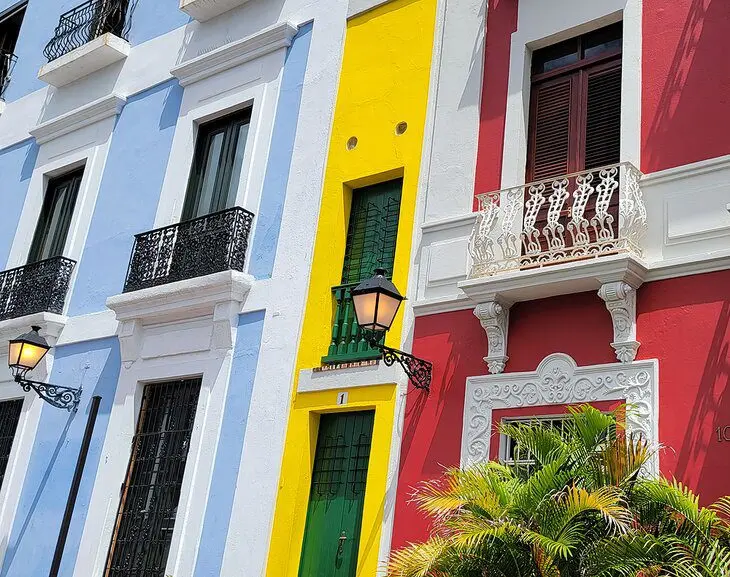
Walking the streets of Old San Juan, with its lovely colonial architecture and imposing forts, is like stepping back into another era. This is one of the best places to visit in Puerto Rico, so make sure you allow some time on your itinerary for this city.
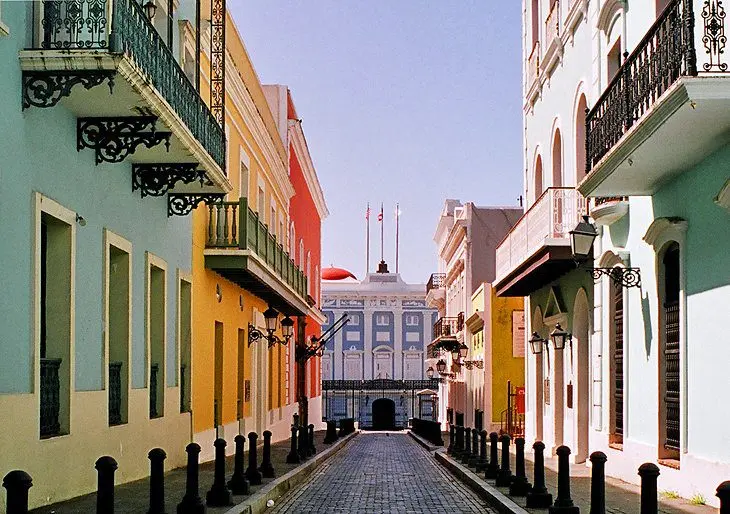
More than 500 years old, and the second oldest city in the Americas, Old San Juan is a mix of Spanish colonial history layered with present day Puerto Rican life. The entire area is a UNESCO World Heritage Site, with hundreds of restored 16th- and 17th-century Spanish colonial buildings. Today, you can dine, shop, or even stay in some of these beautiful old structures.
- Read More: Top-Rated Tourist Attractions in San Juan
2. El Morro Fort (Fuerte San Felipe del Morro)
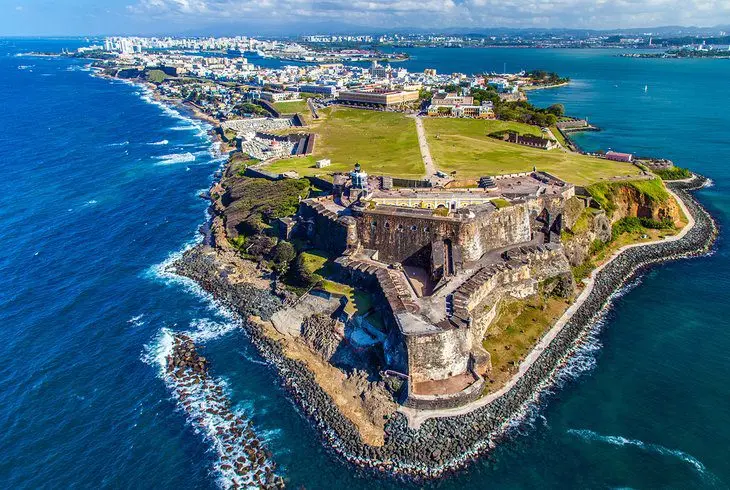
The main attraction in Old San Juan, and one of the top tourist destinations in Puerto Rico is El Morro Fort (Fuerte San Felipe del Morro). Set majestically out on a peninsula, this fort dating from 1539 is a fascinating step back in time.
Wander through the well-kept grounds of this national park and give some thought as to what life would have been like here nearly 500 years ago. Explore the dungeons, walkways, ramps, and tunnels, much of it built in the mid to late 1800s. Be sure to ascend to the top of the walls and walk out to one of the guard towers for fantastic views out over the ocean and back towards Old San Juan, the modern city towering in behind.
It’s a short walk from the Old City to El Morro. Try to come in the morning when the temperatures are cooler. At night, El Morro is lit up and makes for fantastic photos.
3. Castillo de San Cristóbal
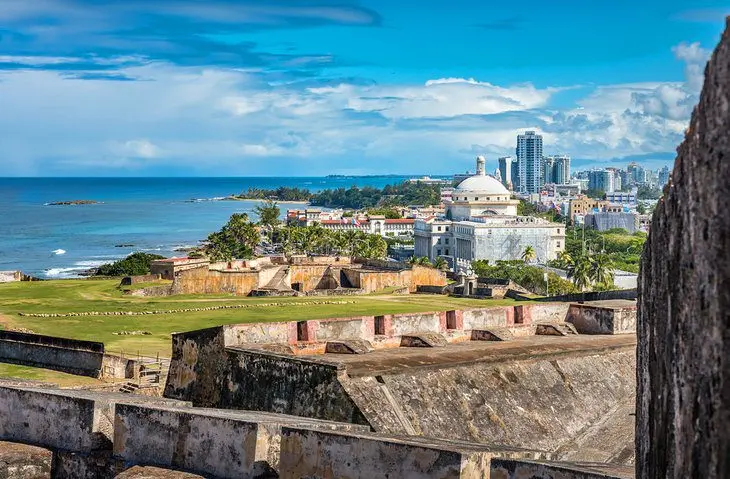
Hiding in plain sight but still in the shadow of the more famous El Morro (which gets all the fame), Castillo de San Cristóbal is definitely worth a visit. Bring your walking shoes – San Cristobal is bigger than El Morro. In fact, it is the largest Spanish fort ever built in the New World and a UNESCO World Heritage Site.
Castillo de San Cristobal is a fun place to explore. For defensive purposes, five separate units are interconnected with moats and tunnels, and spread across 27 acres. If one unit was breached, the occupants could easily move to another one.
Constructed between 1634 and 1790, the fort was designed to stand guard over the eastern gate of historical San Juan. Unlike El Morro, which was constructed and designed to repel a sea attack, Castillo de San Cristobal was designed to protect against an attack from the landward side.
Castillo de San Cristobal is a national park. Your admission here is good for a week and also gets you into El Morro.
4. El Yunque National Forest
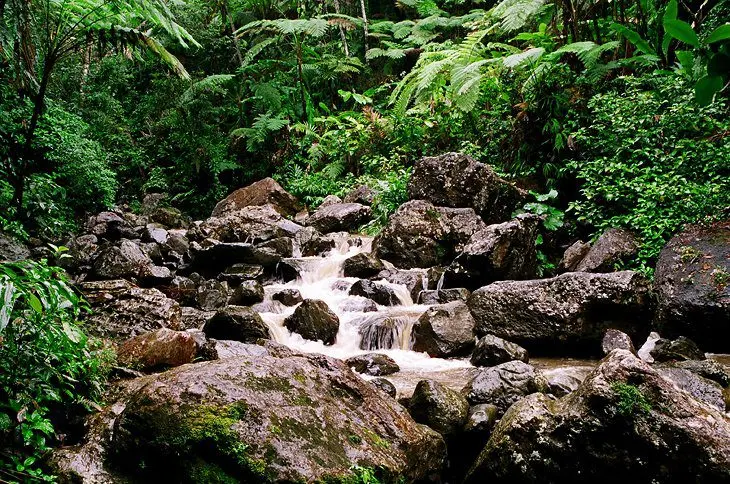
Experience some of Puerto Rico’s lush inland beauty at El Yunque National Forest. Spread along the Luquillo Mountains, including Pico El Yunque, El Yunque National Forest is home to the only tropical rainforest in the National US Forest System.
Walking trails wind through the forest, allowing hikers a closer look at some of the 240 species of trees and hundreds of species of plants (50 species of orchids alone), as well as an abundance of smaller wildlife. El Yunque’s peak reaches 3,500 feet above sea level, and the forest covers 43 square miles, including three-quarters of the island’s remaining virgin forest.
El Yunque National Forest is one of Puerto Rico’s most popular natural attractions and is often visited on a tour from San Juan. The main highlights in El Yunque National Forest include La Coca Falls, Yokahú Tower, Baño Grande, Baño de Oro, and La Mina Falls.
Located beside the highway, La Coca Falls features an 85-foot cascade onto boulder formations and is the first major attraction visitors will come to in El Yunque.
The El Portal Tropical Forest Center is a visitors’ center for those seeking information on the area. Nearby is Yokahú Tower, a 1930’s tower that is open to the public to climb, offering good views out over the rainforest.
The climate here is considerably cooler than along the coast and at lower elevations, and it is noticeably wetter.
El Yunque National Forest was severely damaged by the back-to-back hurricanes in 2017. Repair and recovery has been almost completed, with the main visitor center set to open in 2022. Check with local operators to find the latest updates.
5. Culebra Island (Isla Culebra)
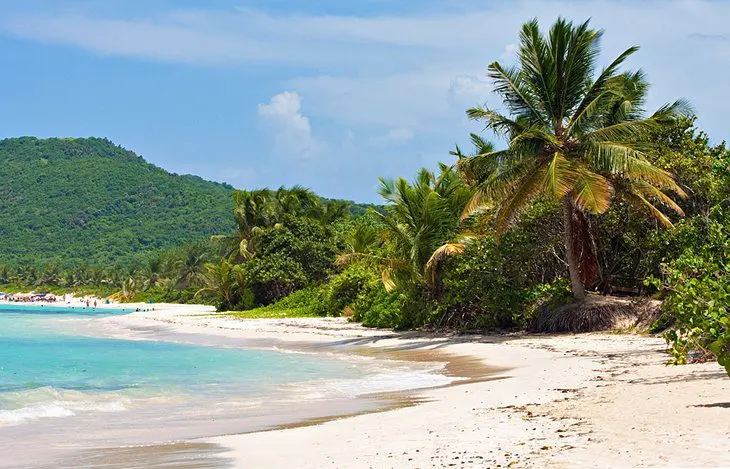
Although Culebra is often mentioned in the same breath as Vieques, this smaller island with beautiful beaches and lush hills has its own unique character. The pace here is unhurried, and the atmosphere relaxed. Eco tourism is big on the island, and many of the tourist establishments are run by expats.
About 17 miles east of Puerto Rico and 12 miles west of the Caribbean island of Saint Thomas, Culebra is only seven miles long and three miles wide, with 23 offshore islands of its own. The area’s coral reefs are considered some of the best in the entire Caribbean.
The horseshoe-shaped Playa Flamenco is the most popular beach on the island and as close to perfect as possible. The water is clear with no surf, making it a good place for swimming or diving, and the blazingly white sand is lined with palms.
Isla de Culebra National Wildlife Refuge is a well-preserved slice of nature that includes the entire coastline of Culebra and more than 20 offshore cays. More than a third of Culebra is designated as the Culebra National Wildlife Refuge, which includes Cayo Luis Peña, a small island just west of Culebra. Here, coves and rugged terrain make for some interesting but challenging hiking opportunities.
6. Vieques and Bioluminescent Bay
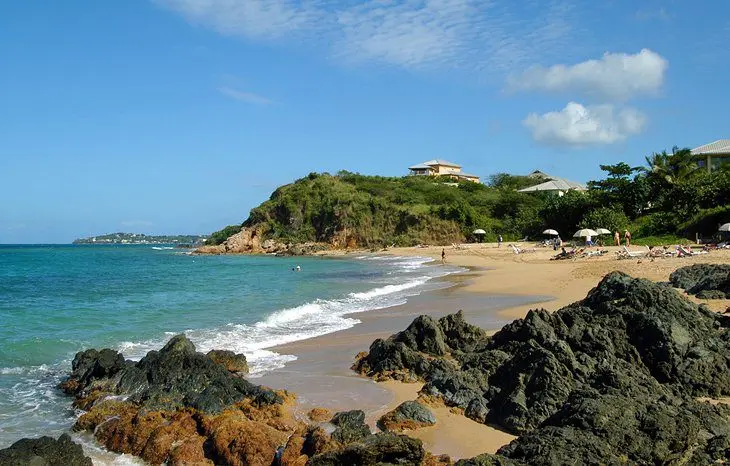
Vieques, eight miles from mainland Puerto Rico, has become a popular beach resort with small, upper-end hotels, restaurants, shops, and galleries. With the departure of the United States Army from the island in 2003, Vieques turned its focus to tourism.
Beautiful beaches are now supported with a quality tourism infrastructure that attracts both Puerto Ricans and foreign travelers, who take the time to make their way over to the island. There are no large hotels or high-rise condo complexes. At 21 miles long and five miles wide, Vieques is the largest of the Spanish Virgin Islands but still offers a small-island feel.
The island is also known for a unique phenomenon at Mosquito Bay (also known as Bioluminescent Bay), where a large concentration of phosphorescent dinoflagellates light up movement in the water at night.
Take a tour, either in a boat or canoe, or a bioluminescent bay kayak trip after dark to experience this natural wonder. While this phenomenon occurs in other areas of Puerto Rico, this is this best place to experience it. Vieques can be reached by air or ferry, with ferries departing from Fajardo.
7. Catedral de San Juan Bautista
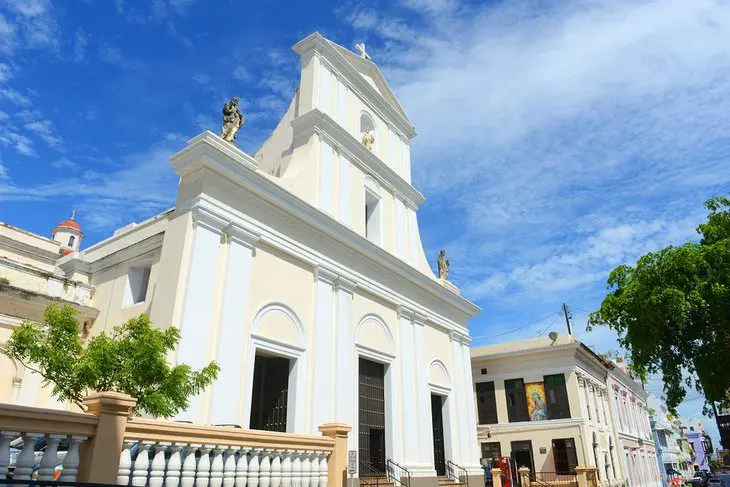
Dating back to 1540, the Catedral de San Juan Bautista, also known as the Cathedral of San Juan is one of the most important religious sites in Puerto Rico. The church is famous for being the final resting place of Ponce de Leon, the Spaniard who undertook the quest for the Fountain of Youth.
One of the lesser known facts about the church is that it is the second oldest structure in the Western Hemisphere. However, the church has aged well, with the generous support of its parishioners. Inside, it’s immaculate, and the stained-glass windows glow as brightly, if not more so, than the day they were created.
The Catedral de San Juan Bautista is a working church and the seat of the Archdiocese of Puerto Rico.
8. Cayo Icacos

With all the beautiful beaches on the mainland, it may seem strange to want to get on a boat and go to another one. However, don’t let that thought process derail you from one of the best things to do when visiting Puerto Rico.
Cayo Icacos, known for its incredible beach, is about a 20- to 30-minute boat ride from Fajardo, a small town found at the northeast end of the island. Cayo Icacos is located in La Cordillera Nature Reserve, so you won’t find any development here; it’s as close to a deserted island as you can get.
Most people take a tour on a large catamaran that includes transport, a luncheon, and drinks. These sociable tours leave around 9am and return around 4pm each day, with a stop for snorkeling at an offshore reef on the way back.
9. Surfing and Whale Watching at Rincon
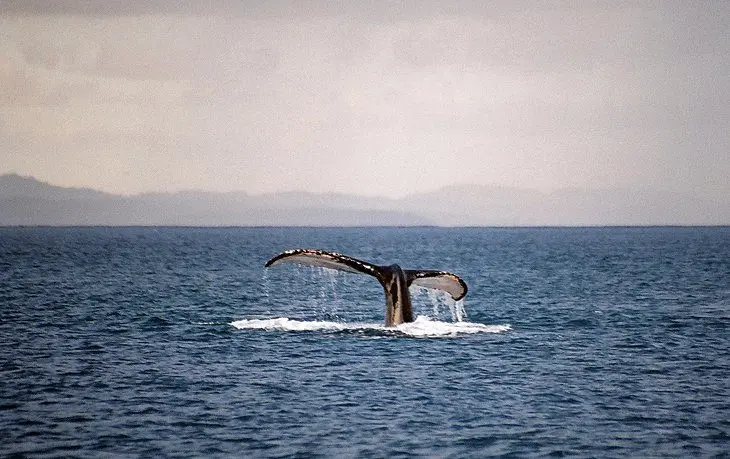
Often called “Pueblo del Surfing” (Surfing Town) and “Little Malibu,” Rincón is known to Puerto Ricans as a “Gringo Paradise.” The dominant language in the area is English, with many foreign surfers and other expats making this town their home.
Rincon became a surfing mecca after the World Surfing Championships in 1968, when images of Rincón and the frequent 15-foot-high waves were transmitted worldwide. Surfing not your thing? Beautiful beaches that are suitable for swimming are mostly to the south of town.
Rincón is also one of Puerto Rico’s main areas for whale watching excursions. The prime whale watching season is mid-January through to March, when humpback whales are in the area. Tours are easily arranged in town.
10. Luquillo Beach
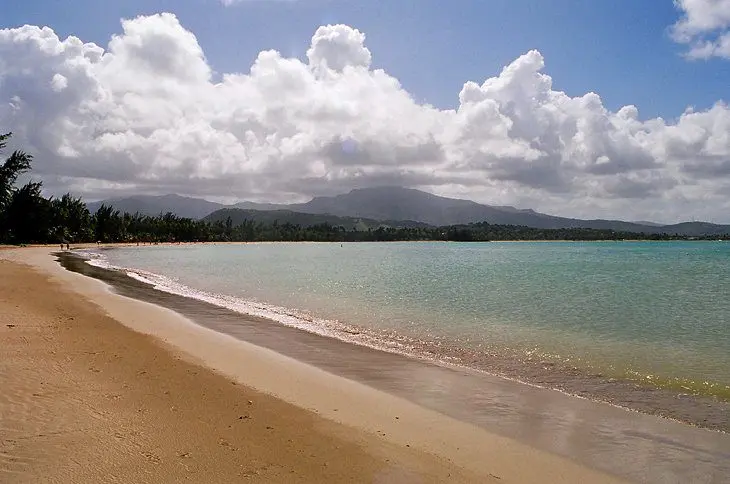
For an easy escape from the busy beaches of San Juan, Luquillo is a terrific option. Luquillo Beach, just a short drive from the city, is a palm-lined stretch of golden sand that offers a fair degree of tranquility, without surrounding high-rise buildings and development.
The water is generally calm for swimming and the beach stretches on for almost a mile, making it ideal for walking. On the grounds, which are shaded with coconut palms, are modern restrooms, showers, and changing rooms with lockers, and just outside the entrance are food sellers. A stop at the beach can be combined with a day trip to El Yunque National Forest.
11. Rio Camuy Caves (Parque de las Cavernas del Río Camuy)
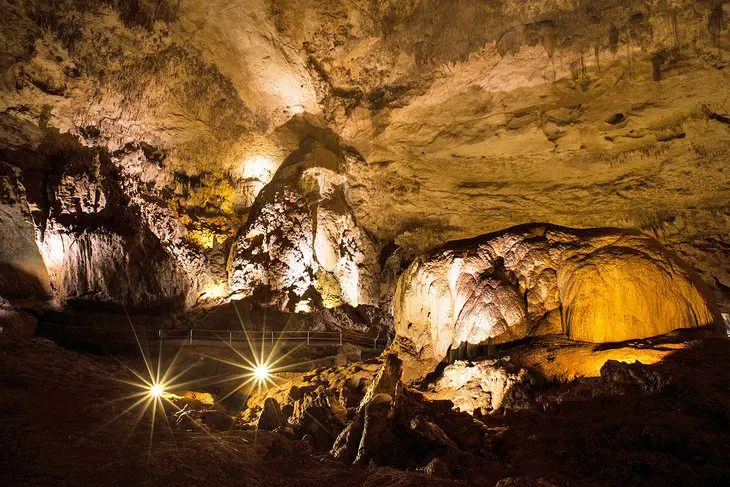
The Rio Camuy Cave Park features a huge cave system covering 268 acres and is thought to be the third largest cave system in the world. A trolley bus transports visitors to a 200-foot-deep cave, or sinkhole, which is now a preserved area known as Cueva Clara Empalme.
The caves feature various rooms, in some cases with extremely high ceilings, stalagmites, and stalactites, and rivers rushing along the base. A guided tour leads visitors through the Cueva Clara Empalme. In addition to the natural wonders the cave system presents, it’s also interesting to note that the caves were used by the indigenous population long ago.
You’ll find the main entrance to the caves located in the Quebrada area of Camuy.
12. Ponce’s Historic City Center
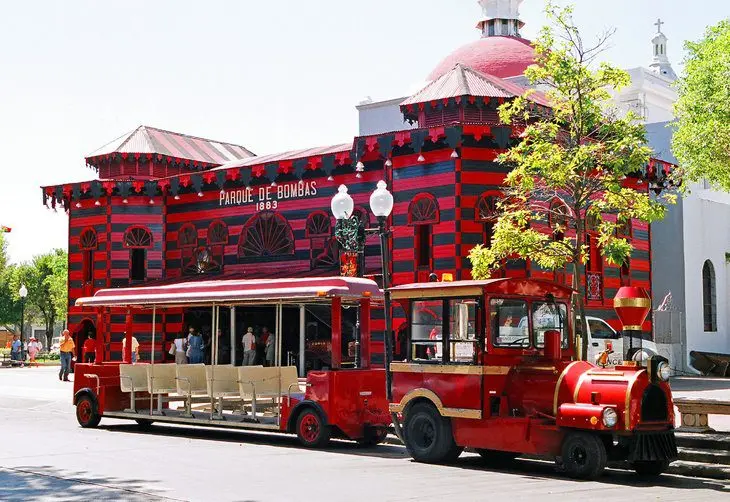
While Ponce is a large city and generally not on the typical tourist route through Puerto Rico, its historic city center is a delight, with 17th-century architecture and open plazas. The Plaza Las Delicias is a good starting point for visitors, with cafés and park benches for convenient people-watching.
Buildings of particular note here are the red- and white-striped Old Ponce Fire Station, the City Hall, and the much more recently built Cathedral (Catedral Nuestra Señora de la Guadalupe). Ponce also has a large number of quality museums, most notably the Ponce Museum of Art.
13. Isla Verde

For the all-inclusive crowd looking for nice resorts and a decent beach within easy reach of a major airport, Isla Verde is just the answer. Everything an overworked, sun-seeking, beach-loving vacationer could ask for – minus Puerto Rican culture – can be found right here. With calm waters lined by a white-sand beach and backed by palm trees and resorts, Isla Verde is a tropical get away with all the comforts.
This area is a suburb of San Juan, and those who are looking to get off the resort without venturing too far will find the historic streets of Old San Juan just a short taxi ride away. Similarly, El Yunque National Rainforest can also be done as an excursion for a quick escape from the beach.
- Read More: Top-Rated Tourist Attractions in San Juan
14. Condado Beach
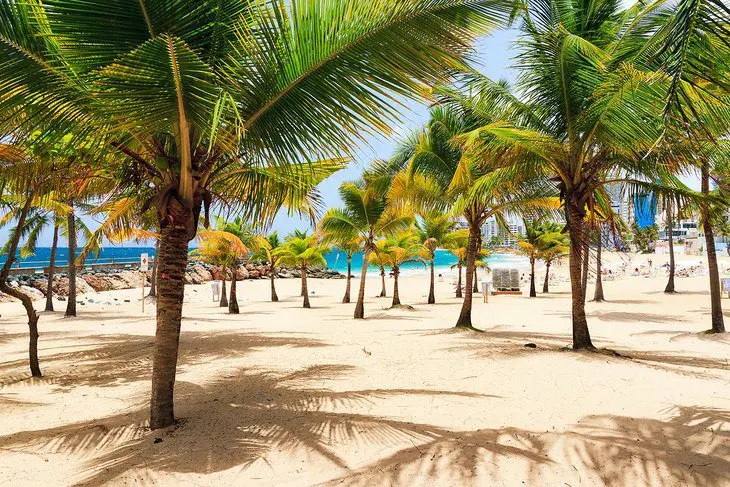
Similar in nature to Isla Verde, Condado Beach is a beach destination that is mere minutes from the historical sights of Old San Juan. The beach is lined with condo and hotel towers, creating a lively scene here with some of the best people watching in the city.
Condado Beach itself is a relatively small beach with golden sand, washed by the warm waters of the ocean. For a longer stretch of sand, head a bit east to towards Punta Piedrita.
It’s what is back from the beach that makes this area hum. The Condado area of the city is a trendy and luxurious place, with Michelin-rated chefs whipping up the latest trendy dishes, while upscale boutiques showcase the latest styles in clothes and home décor.
Some of San Juan’s swankiest hotels are here, including the spectacular and popular 5-star-rated Condado Vanderbilt Hotel .
15. Seven Seas Beach
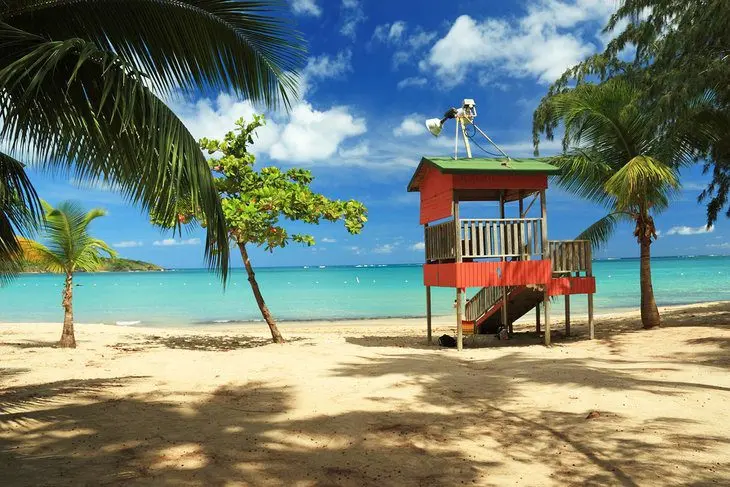
Only 30 miles from San Juan, Seven Seas Beach is a quiet beach with calm, clear waters and great facilities. The beach is family friendly, and just back from the sand, you’ll find picnic tables, restrooms, concession stands, and easy parking.
The sand here is a golden brown, and the beach has a gentle slope. The swimming area is roped off, and boats are prohibited. The best section of the beach is at the western end; the eastern end can be rocky.
16. Museum of Art Puerto Rico

One of the most important museums in Puerto Rico, the Museum of Art is one of the top cultural things to do in San Juan. The permanent and temporary collections are showcased in 24 different halls throughout the 130,000-square-foot museum. The museum is spread out across two buildings, one historical and one modern.
The main focus of the permanent collection is work from the 17th century through to more contemporary works. A good way to get a better understanding of all the cherished pieces is to take one of the free tours offered on Saturday at 10am or Sunday at 2pm.
Address: #299 De Diego Ave, San Juan
Official site: https://www.mapr.org/en
Frequently Asked Questions
When is the best time to visit Puerto Rico?
The best time to visit Puerto Rico is December to May. This is the dry season, and at this time, the weather will be consistently warm and sunny. You’ll pay more, but it’s definitely worth the premium.
| Average minimum and maximum temperatures for San Juan, PR in °C | |||||||||||
| J | F | M | A | M | J | J | A | S | O | N | D |
| 28 22 | 28 22 | 28 22 | 29 23 | 30 24 | 31 25 | 31 25 | 31 25 | 31 25 | 31 24 | 29 23 | 28 22 |
| PlanetWare.com | |||||||||||
| Average monthly precipitation totals for San Juan, PR in mm. | |||||||||||
| 77 | 58 | 54 | 94 | 134 | 89 | 106 | 133 | 142 | 129 | 157 | 116 |
| Average minimum and maximum temperatures for San Juan, PR in °F | |||||||||||
| J | F | M | A | M | J | J | A | S | O | N | D |
| 82 71 | 83 71 | 83 72 | 85 73 | 86 75 | 88 77 | 87 77 | 88 77 | 88 77 | 88 76 | 85 74 | 83 72 |
| PlanetWare.com | |||||||||||
| Average monthly precipitation totals for San Juan, PR in inches. | |||||||||||
| 3.0 | 2.3 | 2.1 | 3.7 | 5.3 | 3.5 | 4.2 | 5.2 | 5.6 | 5.1 | 6.2 | 4.6 |
What is the best way to get around Puerto Rico?
Within the historic Old City of San Juan, it’s all about walking. Streets are narrow, and you’ll want to take your time checking things out. If you are arriving via cruise ship, the port is only a 10-minute walk away.
If you plan on exploring the rest of the island, rental cars are easy and affordable. The same rules of the road apply as mainland USA.
Intercity buses, called guaguas, are available, but the routes and schedules are not ideal for tourist use. For short hops between towns or in town, jump on a publico. These are minibuses and are very cheap. You can stand on the side of the road and flag them down.









